Introduction
- COVID-19 is a new strain of the coronavirus, a respiratory disease.
- First reported in Wuhan, China in December 2019.
- Transmitted through droplets from an infected person and spread through coughing and sneezing.
- Globally, has affected approximately 3 million people, recording over 200,000 deaths.
- Considered significantly fatal to elderly and people with underlying medical conditions.
- Black American community is most affected.
- People of color not able to access test kits or treatment/access to a health facility when sick.
COVIC-19 was first reported in Wuhan, China in December 2019. It has spread all over the world and has literally caused a shutdown on the economy. Many stock markets have plunged due to the disease with many investors seeking to pull out their funds in an attempt to shield themselves from the effects of the virus. Many airlines have also closed down alongside both small and large scale businesses.
Black Americans have been most affected due to various reasons. One reason is the fact that a significant number of casual laborers and part time workers are black Americans. This means that they cannot afford to stay at home during the pandemic and have to risk in order to put food on the table. Also, the fact that a significant number work in the health care system also ensures that they are more exposed. The additional fact that they do not have access to test kits, as they cannot pay for them, or hospitals makes the situation worse.
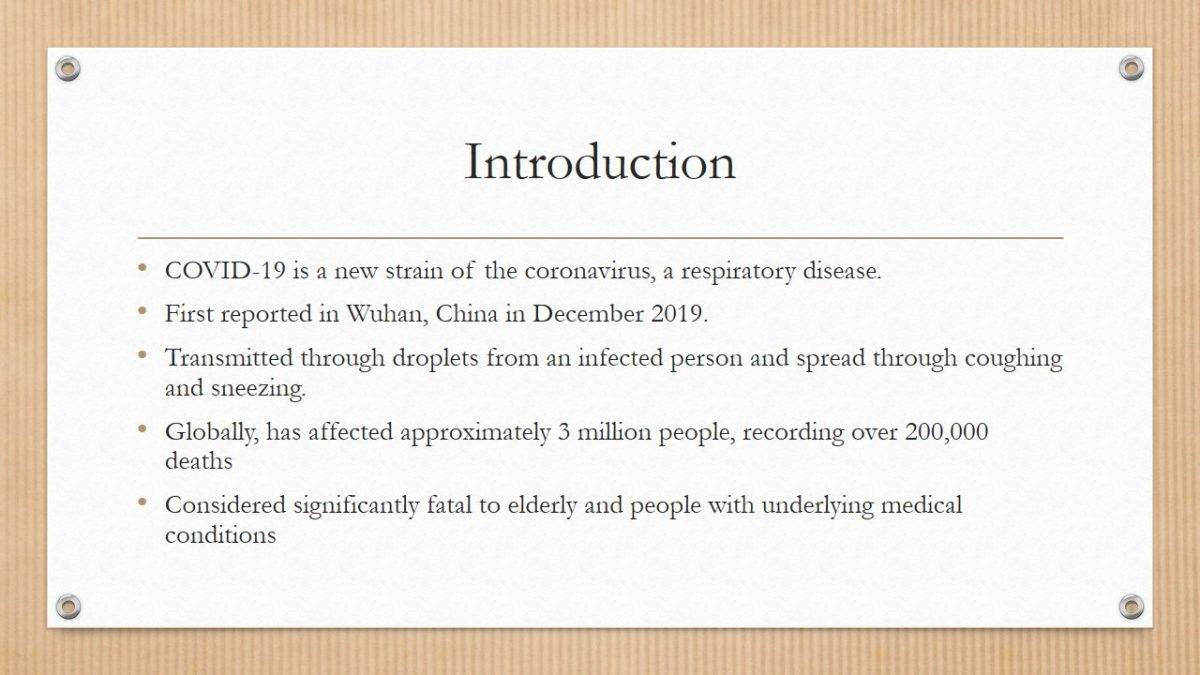
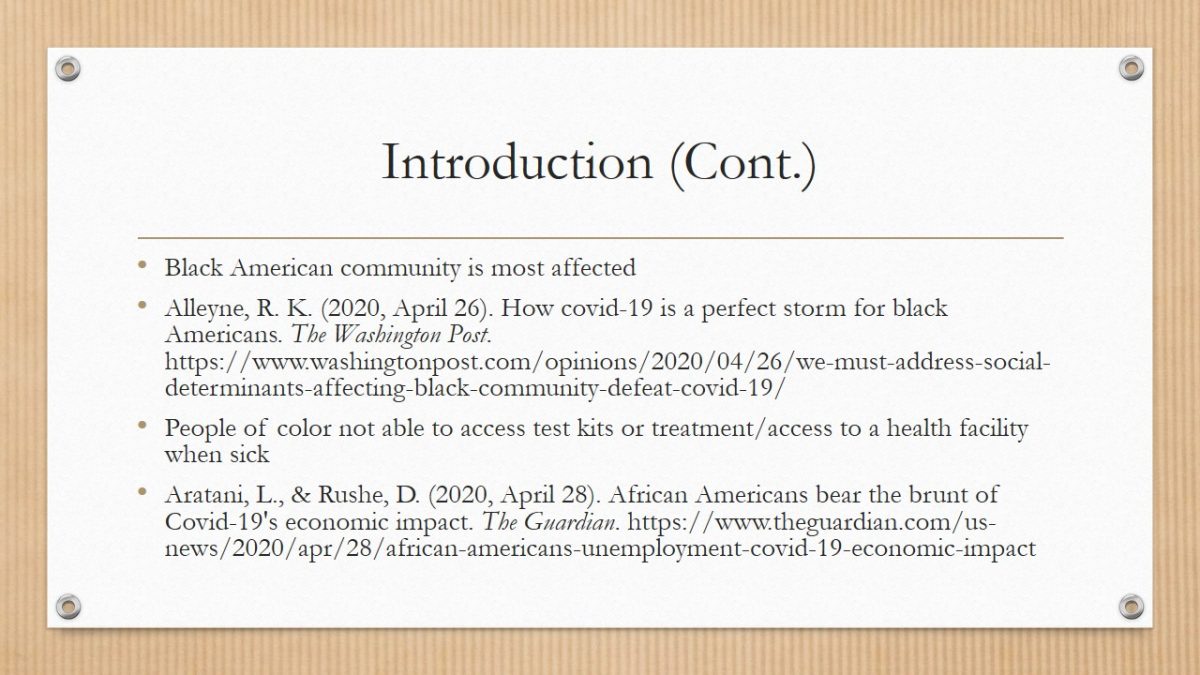
Review of First Research Article
- Laditka and Laditka (2016) state that unemployment, disability and mortality rate are all high for people of color.
- Unemployment has encouraged reduced health care spending among the black American community.
- Payment for health care services mainly using cash as insurance can be expensive.
- Black Americans have more lifestyle diseases and underlying medical conditions such as diabetes and hypertension.
- Media agrees that black Americans are most affected by COVID-19 (Aratani and Rushe, 2020).
- Aratani and Rushe (2020) explain that casual employment among the black community ensures they cannot miss work and stay at home.
- Aratani and Rushe (2020) anticipate that the community is among the most affected with the recent rising unemployment rate caused by COVID-19.
- A significant percentage of workers of color also earn minimum wage.
- Laditka and Laditka (2016) explain that black Americans are low income earners.
- Makes it harder to purchase insurance as they live hand to mouth.
- Lack significant liquidity of assets or emergency funds.
- Do not have significant assets and liquid cash in terms of savings.
The selected article is by James and Sarah Laditka who design a study investigating the rates of unemployment, disability and life expectancy among the different races in the US. Findings show that the minority races, including black Americans, are disadvantaged as compared to Caucasians due to various reasons. Particularly, in terms of unemployment, since the black American community has a higher rate of unemployment, they cannot afford health insurance. They will either pay for such services in cash or not go to the hospital at all.
The premises suggested by the article by James and Sarah Laditka are supported by the chosen media content. For example, Laditka and Laditka (2016) pose that unemployment rate among black Americans is high. They also add that black Americans make the largest percentage of low income earners in the US.
The fact that the black community has less cash at hand also means that they are unable to get the test kits needed for COVIC-19. Additionally, they are unable to save and do not have any form of emergency funds to cushion them from tragedies such as COVID-19.

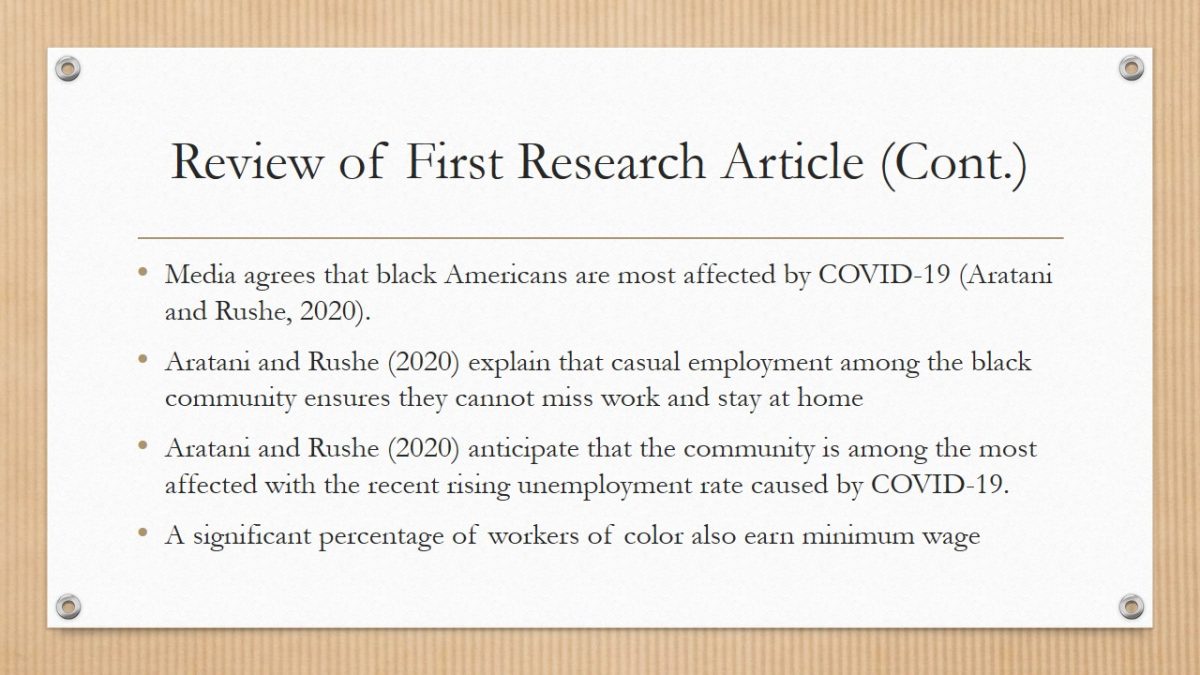

Review of Second Research Article
- Rosier (2016) states that lack of health care insurance has led to rapid increase of lifestyle diseases among black Americans.
- Most common lifestyle diseases noted are diabetes and hypertension.
- Majority of the affected have a lower socioeconomic status.
- No relationship between management of lifestyle diseases and insurance.
- Media agree that higher rates of asthma, diabetes and heart disease have increased the black community’s chance to get COVIC-19 (Alleyne, 2020).
- Underlying health conditions also make the respiratory condition more fatal.
- Proper management of the underlying conditions not proven an effective way of lowering fatality of the disease.
- Working at the hospital as casual laborers such as cleaners and restaurant tellers.
- Casual laborers not insured by employers.
- Limited formal education makes it harder for the black American casual laborers to understand the importance of staying at home.
- Low rates of testing in the community also a hindrance.
The second article is by Rosier, who looks at management of lifestyle diseases in relation to health insurance. The scholar explains that one of the findings was that black Americans had more lifestyle diseases compared with other races. Additionally, they also did not have health insurance. Whereas they were still aware of the importance of management of their diabetes, they use cash to access medicine and health facilities.
Doctors have stated that people with underlying medical conditions have a higher fatality rate than others. In fact, they are encouraged not to expose themselves at all in order to completely prevent chances of getting the disease. The black American community has high numbers of the mentioned underlying conditions and do not have either extra cash or insurance to get the help they need.
A significant number of casual laborers, who are also part of the essential workers currently working are black American. This puts them at a higher risk of getting the virus. Additionally, many of the laborers are not insured. However, it is critical to note that Medicaid should pay for COVID-19 treatments but hospitals are too full. The fact that many of these casual workers are also not well educated makes it harder for the government to ask them to stay at home as their skills are mainly practical and they cannot work from home.
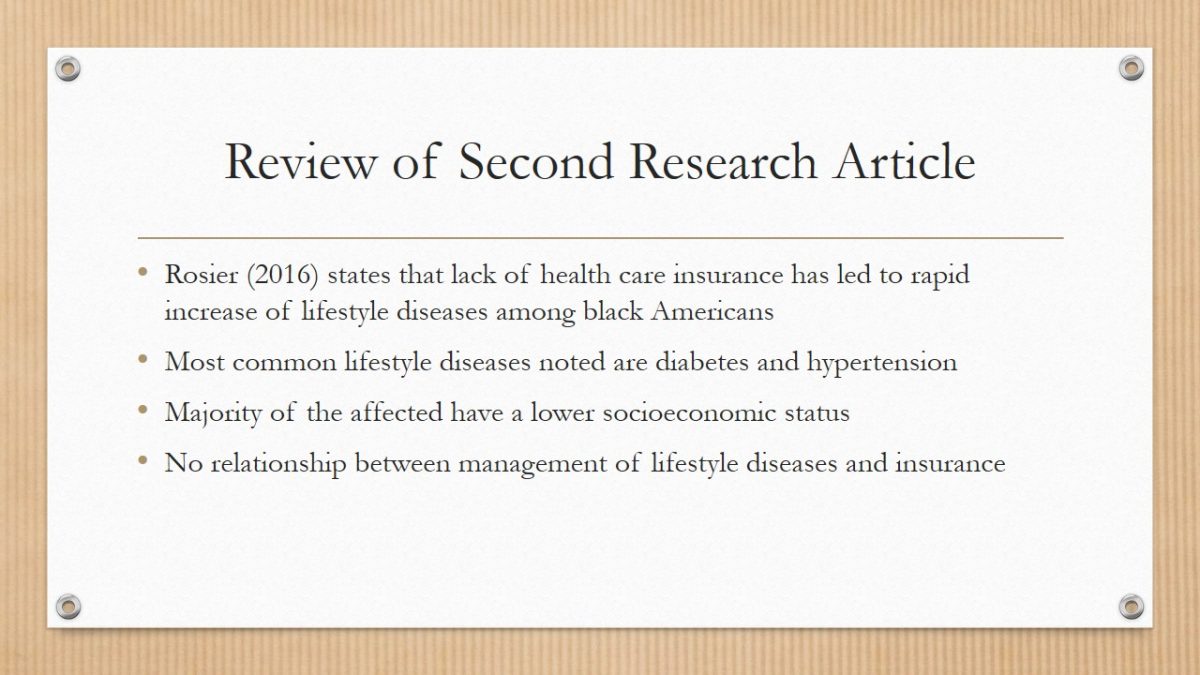
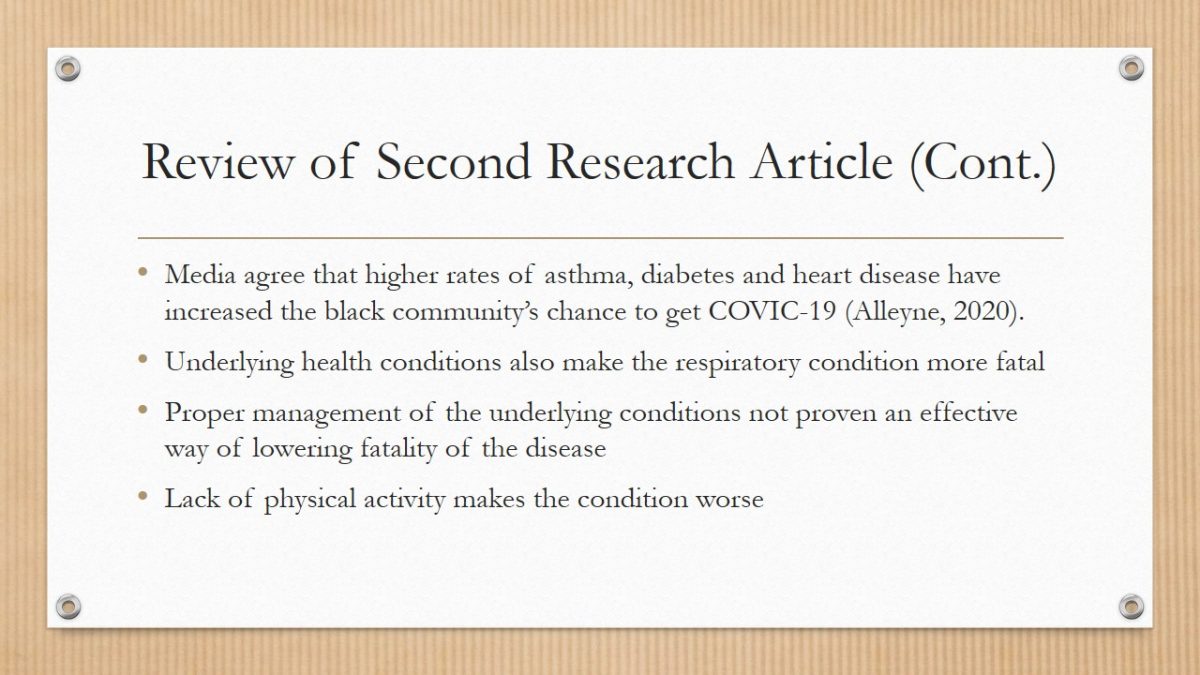

Conclusion
- COVID-19 affects everyone despite age, race or gender.
- The black American community is affected more in the US.
- The black community is affected more as they make up a significant number of the unemployed population in the US and cannot work from home.
- Lack of insurance and access to health facilities puts the community in danger of getting the virus.
- The black American community is also leading in lifestyle diseases in the US such as asthma and diabetes.
- These underlying medical conditions can cause fatality if a patient gets the coronavirus.
- Lack of insurance or money makes it harder for the community to get required testing and treatment.
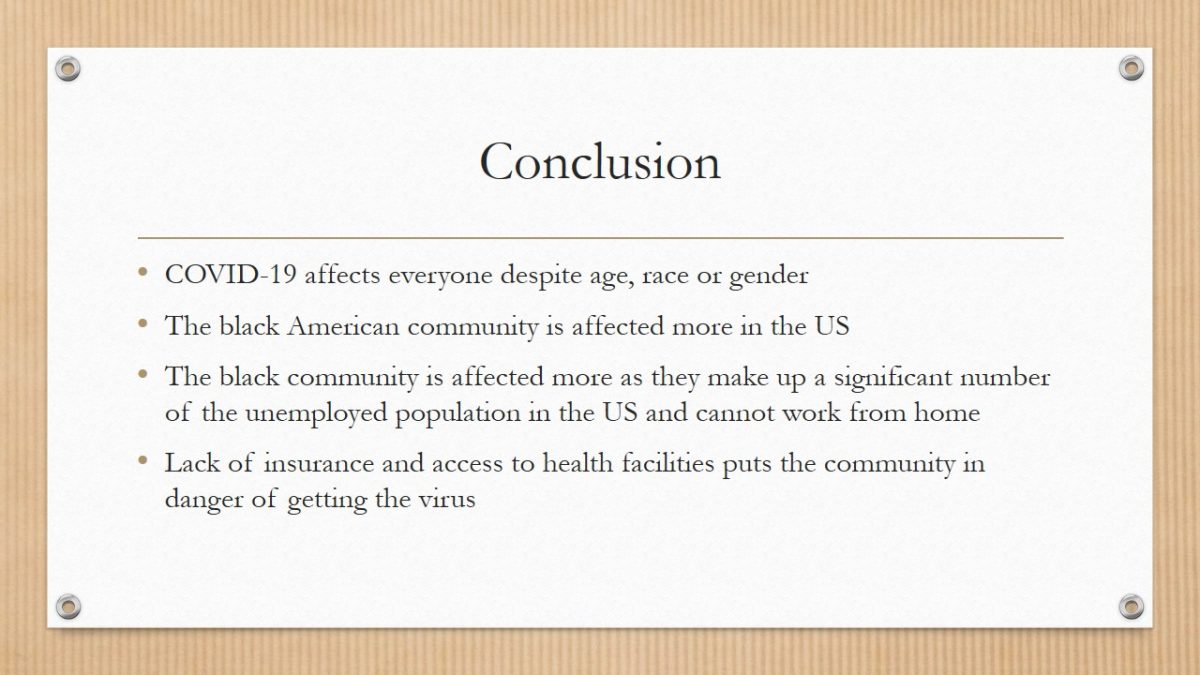
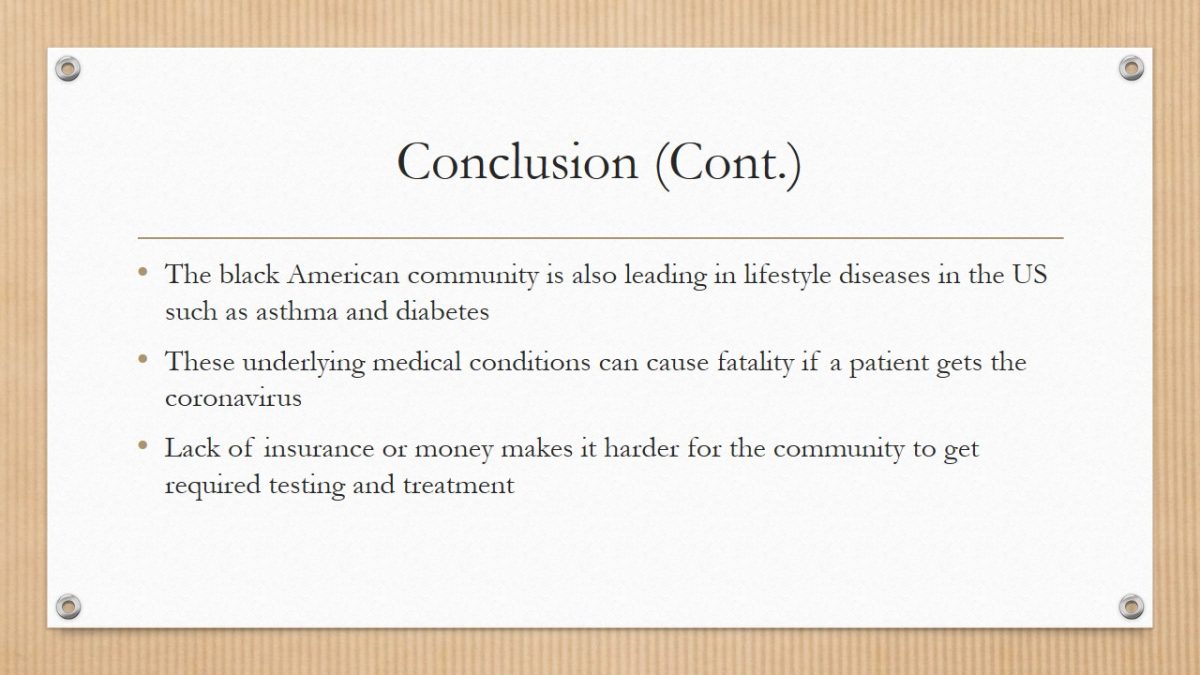
References
- Aratani, L., & Rushe, D. (2020). African Americans bear the brunt of Covid-19’s economic impact. The Guardian. Web.
- Alleyne, R. K. (2020). How covid-19 is a perfect storm for black Americans. The Washington Post. Web.
- Laditka, N. J., & Laditka, B. S. (2016). Unemployment, disability and life expectancy in the United States: A life course study. Disability and Health Journal, 9(1), 46-53.
- Rosier, L. (2018). Health Insurance Status and Diabetes Management Practices Among Black Adults in the U.S. [Unpublished Honors Undergraduate Theses]. University of Central Florida.